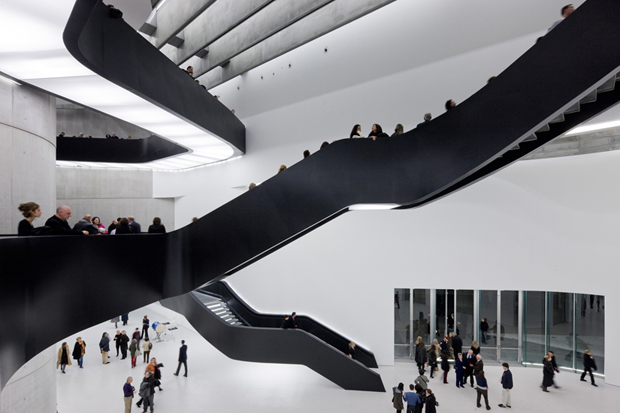
The Stirling Prize shortlist 2010
The low-down on this year's line-up for 'the feather in the cap' of the RIBA's s awards
Presented in the name of maverick British architect James Stirling (1926 - 1992) - an architect’s architect and lover of cultural depth and historical reference - the annual Stirling Prize is the feather in the cap of the Royal Institute of British Architects’ (RIBA) various awards. Aimed at provoking debate among the cultured rather than architects themselves, the prize ceremony presents a varied menu for the chattering classes (or press) to tuck in to and has been televised since 1999 - this year as part of BBC TWO’s The Culture Show.
This year's list of six buildings by British architects include two abroad: in Rome and Berlin, and four which are more local: two in London, one in Guildford and one in Oxford. All except one are placed in urban contexts, to which the response ranges from a minutely detailed engagement with existing fabric to the sort of sitelessness unseen since the high times of International Modernism.
The two most well known architects on the list represent these extremes: David Chipperfield (Stirling Prize 2007 winner with another German building) with his €233million transformation of the Neues Museum in Berlin, and Iraq-born Zaha Hadid, also in the news for designing her first Iraq-based scheme, with the €150million avant-garde MAXXI museum in Rome.
Zaha Hadid Architects’ museum is a manifestation of the beautiful dreams of her consummate drawings and paintings. Described by Observer architecture critic Rowan Moore as "a passegiatta played out on multiple intersecting levels," he argues the case for the most famous woman architect in history who has never before won, despite being included on the Stirling shortlist several times.
Telegraph architecture critic Ellis Woodman compares this “undeniably awe inspiring display of architectural bravura” and rebranding exercise for Rome (in the lineage of American architect Frank Gehry’s Bilbao Guggenheim) with the “stunningly courageous transformation of Berlin’s ruined Neues Museum.” Derelict since being hit by allied bombing during World War II, David Chipperfield Architects, with conservation specialists Julian Harrap Architects, have refurbished rather than restored this 19th century building. Original fragments are preserved alongside new interventions in a sophisticated and sometimes theatrical ensemble.
One step down from the ethered heights resides American architect Rick Mather, solid favourite of Museum and University building commissioners throughout Britain. His client for the £61million extension to the Ashmolean - one of the oldest museums in Britain - has no doubt it’ll be recognised very soon as one of the outstanding museum buildings of the 21st century. This intervention, almost invisible from the outside, doubles the museum’s size. Planned around a top-lit atrium, visible connections between gallery spaces serve exhibition designers Metaphor’s brief, Crossing Cultures Crossing Time.
Further down the establishment ladder are the dRMM and DSDHA, designers of the two very different school extensions on the list. One has a subdued palette of brick and concrete, the other is a brightly coloured lantern. Their presence has been hailed as a political protest by the RIBA in response to the cuts in the school construction programme. As current RIBA President Ruth Reed and one of the award’s judges says, “it could be some time before we see such exemplar school buildings on the Stirling shortlist again.”
Almost unknown previously, Theis and Khan Architects have developed and designed their own office, gallery and residential building – Bateman’s Row House, in Shoreditch, London. The jury remarks upon the cleverness of the project, a “fortress-like … environment for family-living within a tough urban environment… providing a safe haven and respite.”
So who will be the winner? The RIBA will be gunning for the glamorous MAXXI, serious architects for the Neus Museum, but often it’s a solid compromise that wins, so my money (although not my heart) goes on dRMM’s primary school extension – pretty and politically correct should do it.
By Helen Thomas
Senior Architectural Editor, Phaidon